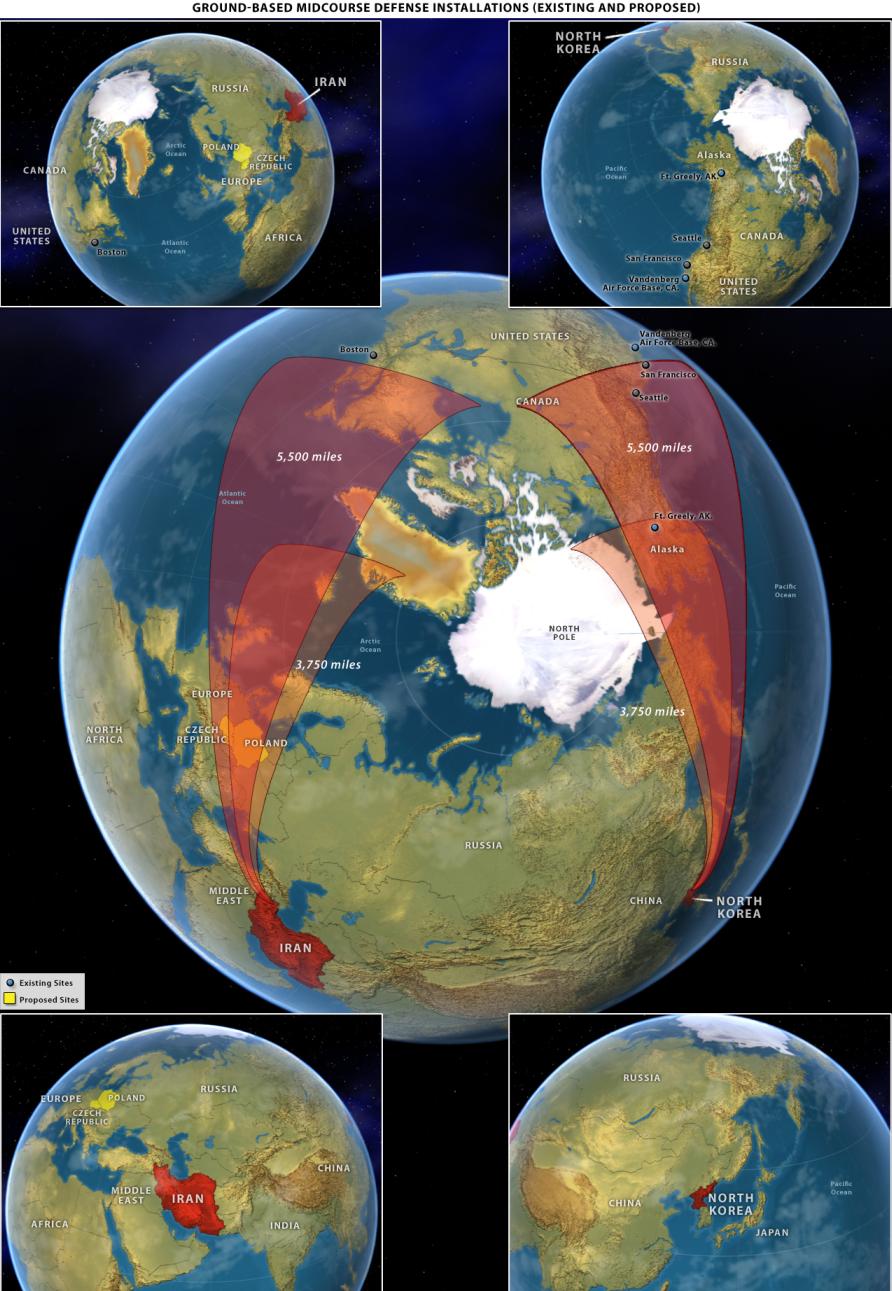The current 4 part case study is among others, what came out of this involvement during the last quarter of 2008.
As mentioned in our Jan.1 preview, today it is clear that the strongest destabization facter worldwide is that of the current financial fall out. No matter how low interest rates go or how high deficits rise, there will be a substantial increase in unemployment in most economies this year and a painful decline in incomes. The answer is obvious: The resources available for policing the world are certain to be reduced for the foreseeable future.
As we suggested, Russia’s campaign in Georgia — blemishes and all — proved that the current force as equipped and fielded could have significant deterrent value in Russia’s sphere of influence. Moscow can credibly threaten the use of force precisely because it applied force in Georgia. This is not lost on peripheral states large or small. In each case, the capability to defend against that force is questionable at best unless Article 5 is invoked. By that measure, the Russian military has already regained the fundamental capacity for influencing events with military force on its periphery.
And that development is a reminder that, despite the many challenges to reform, a chapter of history remains to be written that will likely include, once again, Russian military power as an element of Russian national power.
When we placed the first part of our prediction for the first half of 2009 on-line by Jan. 1, one should ad that during 2009 the global economic crisis might at one point become the main security concern facing Europe and the US.
We then wrote in P.2 of this 4 part series: Russia has devised ambitious military reform plans and revised time and again to accommodate the realities of the moment, often departing from the plans’ original goals. This time around, as Russia tries to reassert itself as a regional power, broad military reform is a critical priority for the Kremlin. Some progress is certainly in the cards, and although it will not likely conform to previously articulated plans, it could lead to limited successes that are sufficient for Moscow’s needs, such as the Georgian operation in August 2008.
In fact where in October 2008, we wrote the global financial crisis was ‘not crippling’ Russia and that the Kremlin was using the situation to assert more control, alarmed as it became the Kremlin in January then relinquished some of this control. As predicted by Jan. 28 the Rubble, indeed started to slide and a crash is still possible. In fact during the coming months Russian Banks might also start to be in trouble. This in turn might alarm Italian, Austrian, Swedish and Greek banks including Germany, because they are exposed to Europe’s emerging markets.
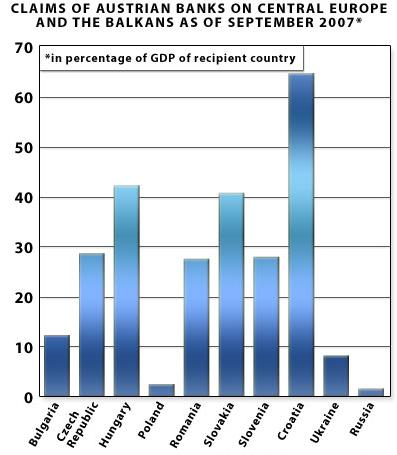
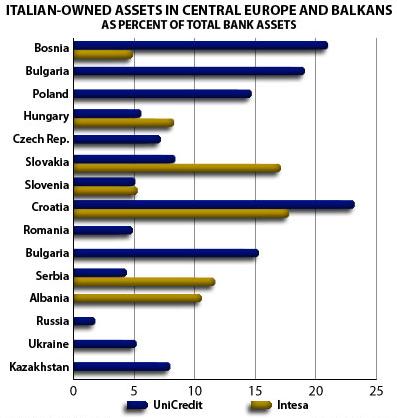
Earlier in 2008, while the ruble was appreciating versus the euro and dollar, and while economic growth in Russia was strong (which was dependent on the appreciating cost of energy), the Russian banks made huge profits, which allowed them to keep up with their loan payments.
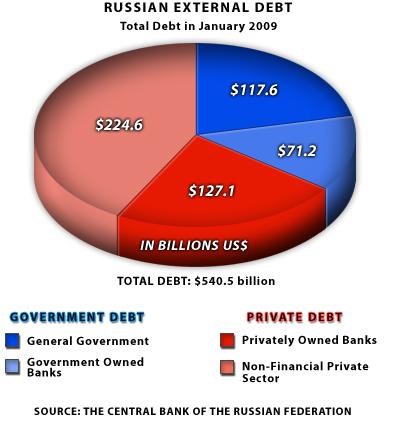
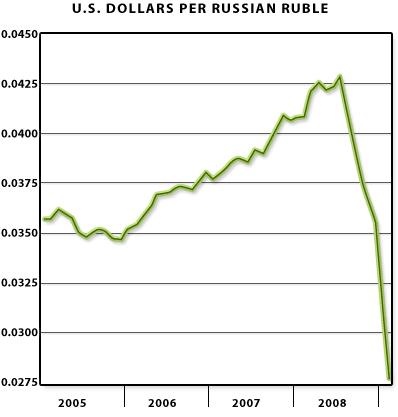
The Kremlin’s primary concern again, will not be economics or profitability, but control of the sector and the severing of the sector’s foreign exposure. Moreover, the Kremlin has never really concerned itself with coming across to foreigners as a good and fiscally responsible neighbor. Second, inasmuch as economics or profitability do color the Kremlin’s thinking, Moscow will value Russian economics over Western economics. So those Western banks that chose to lend to their Russian peers are almost certainly going to be getting a haircut — Russian style.
Which means that the European banks — which are already stretched to the breaking point with their own recession and financial troubles — will face a double bind.
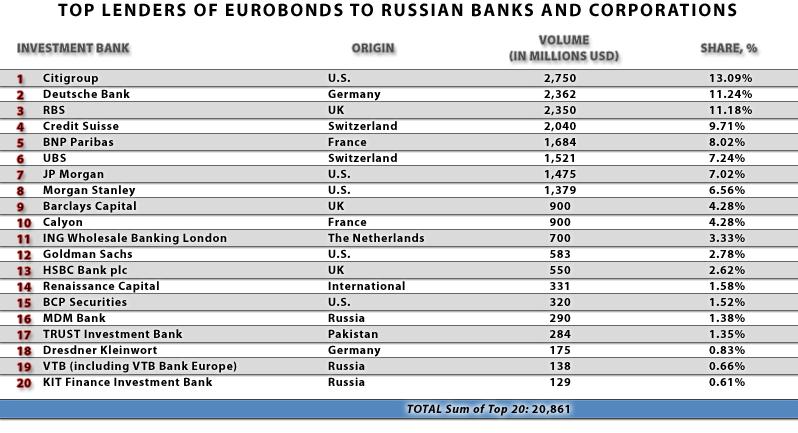
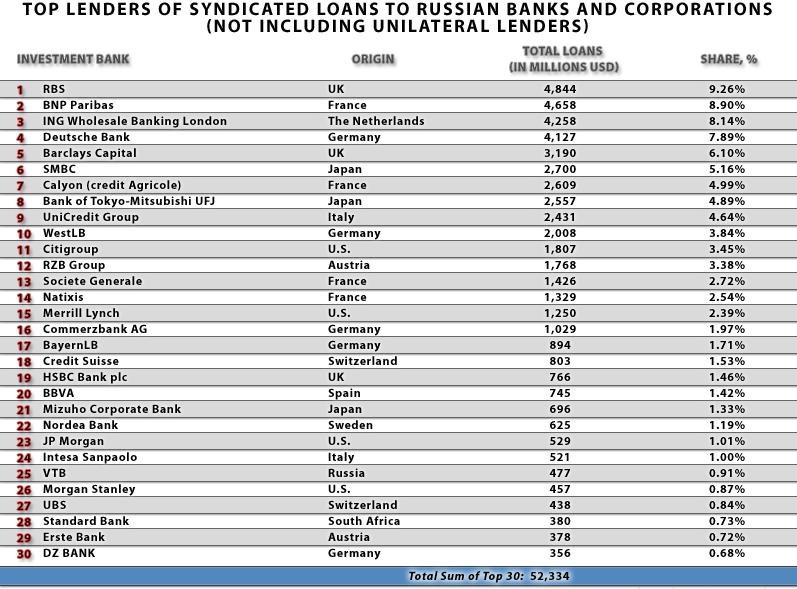
In conclusion
of our four part investigation about Russian power, the reality and role
of the Russian economy must now also be examined.
All states
economies’ to a great degree reflect their geographies. In the United
States, the presence of large, interconnected river systems in the central
third of the country, the intracoastal waterway along the Gulf and Atlantic
coasts, the vastness of San Francisco Bay, the numerous rivers flowing
to the sea from the eastern slopes of the Appalachian Mountains and the
abundance of ideal port locations made the country easy to develop. The
cost of transporting goods was nil, and scarce capital could be dedicated
to other pursuits. The result was a massive economy with an equally massive
leg up on any competition.
Russia’s
geography is the polar opposite. Hardly any of Russia’s rivers are interconnected.
The country has several massive ones — the Pechora, the Ob, the Yenisei,
the Lena and the Kolyma — but they drain the nearly unpopulated Siberia
to the Arctic Ocean, making them useless for commerce. The only river that
cuts through Russia’s core, the Volga, drains not to the ocean but to
the landlocked and sparsely populated Caspian Sea, the center of a sparsely
populated region. Also unlike the United States, Russia has few useful
ports. Kaliningrad is not connected to the main body of Russia. The Gulf
of Finland freezes in winter, isolating St. Petersburg. The only true deepwater
and warm-water ocean ports, Vladivostok and Murmansk, are simply too far
from Russia’s core to be useful. So while geography handed the United
States the perfect transport network free of charge, Russia has had to
use every available kopek to link its country together with an expensive
road, rail and canal network.
One of the many side effects of this geography situation is that the United States had extra capital that it could dedicate to finance in a relatively democratic manner, while Russia’s chronic capital deficit prompted it to concentrate what little capital resources it had into a single set of hands — Moscow’s hands. So while the United States became the poster child for the free market, Russia (whether the Russian Empire, Soviet Union or Russian Federation) has always tended toward central planning.
Russian industrialization and militarization began in earnest under Josef Stalin in the 1930s. Under centralized planning, all industry and services were nationalized, while industrial leaders were given predetermined output quotas.
Perhaps the most noteworthy difference between the Western and Russian development paths was the different use of finance. At the start of Stalin’s massive economic undertaking, international loans to build the economy were unavailable, both because the new government had repudiated the czarist regime’s international debts and because industrialized countries — the potential lenders — were coping with the onset of their own economic crisis (e.g., the Great Depression).
With loans and
bonds unavailable, Stalin turned to another centrally controlled resource
to “fund” Russian development: labor. Trade unions were converted into
mechanisms for capturing all available labor as well as for increasing
worker productivity. Russia essentially substitutes labor for capital,
so it is no surprise that Stalin — like all Russian leaders before him
— ran his population into the ground. Stalin called this his “revolution
from above.”
Over the long
term, the centralized system is highly inefficient, as it does not take
the basic economic drivers of supply and demand into account — to say
nothing of how it crushes the common worker. But for a country as geographically
massive as Russia, it was (and remains) questionable whether Western finance-driven
development is even feasible, due to the lack of cheap transit options
and the massive distances involved. Development driven by the crushing
of the labor pool was probably the best Russia could hope for, and the
same holds true today.
In stark contrast to ages past, for the past five years foreign money has underwritten Russian development. Russian banks did not depend upon government funding — which was accumulated into vast reserves — but instead tapped foreign lenders and bondholders. Russian banks took this money and used it to lend to Russian firms. Meanwhile, as the Russian government asserted control over the country’s energy industries during the last several years, it created a completely separate economy that only rarely intersected with other aspects of Russian economic life. So when the current global recession helped lead to the evaporation of foreign credit, the core of the government/energy economy was broadly unaffected, even as the rest of the Russian economy ingloriously crashed to earth.
Since Putin’s rise, the Kremlin has sought to project an image of a strong, stable and financially powerful Russia. This vision of strength has been the cornerstone of Russian confidence for years. Note that we say “vision,” not “reality.” For in reality, Russian financial confidence is solely the result of cash brought in from strong oil and natural gas prices — something largely beyond the Russians’ ability to manipulate — not the result of any restructuring of the Russian system. As such, the revelation that the emperor has no clothes — that Russia is still a complete financial mess — is more a blow to Moscow’s ego than a signal of a fundamental change in the reality of Russian power.
So while Russia might be losing its financial security and capabilities, which in the West tend to boil down to economic wealth, the global recession has not affected the reality of Russian power much at all. Russia has not, currently or historically, worked off of anyone else’s cash or used economic stability as a foundation for political might or social stability. Instead, Russia relies on many other tools in its kit. Some of the following six pillars of Russian power are more powerful and appropriate than ever:
1. Geography: As we have seen in the first three parts of this four part investigation, unlike its main geopolitical rival, the United States, Russia borders most of the regions it wishes to project power into, and few geographic barriers separate it from its targets. Ukraine, Belarus and the Baltic states have zero geographic insulation from Russia. Central Asia is sheltered by distance, but not by mountains or rivers. The Caucasus provide a bit of a speed bump to Russia, but pro-Russian enclaves in Georgia give the Kremlin a secure foothold south of the mountain range (putting the August Russian-Georgian war in perspective). Even if U.S. forces were not tied down in Iraq and Afghanistan, the United States would face potentially insurmountable difficulties in countering Russian actions in Moscow’s so-called “Near Abroad.” Russia can project all manner of influence and intimidation there on the cheap, while even symbolic counters are quite costly for the United States. In contrast, places such as Latin America, Southeast Asia or Africa do not capture much more than the Russian imagination; the Kremlin realizes it can do little more there than stir the occasional pot, and resources are allotted (centrally, of course) accordingly.
2. Politics: It is no secret that the Kremlin uses an iron fist to maintain domestic control. There are few domestic forces the government cannot control or balance. The Kremlin understands the revolutions (1917 in particular) and collapses (1991 in particular) of the past, and it has control mechanisms in place to prevent a repeat. This control is seen in every aspect of Russian life, from one main political party ruling the country to the lack of diversified media, limits on public demonstrations and the infiltration of the security services into nearly every aspect of the Russian system. This domination was fortified under Stalin and has been re-established under the reign of former President and now-Prime Minister Vladimir Putin. This political strength is based on neither financial nor economic foundations. Instead, it is based within the political institutions and parties, on the lack of a meaningful opposition, and with the backing of the military and security services. Russia’s neighbors, especially in Europe, cannot count on the same political strength because their systems are simply not set up the same way. The stability of the Russian government and lack of stability in the former Soviet states and much of Central Europe have also allowed the Kremlin to reach beyond Russia and influence its neighbors to the east. Now as before, when some of its former Soviet subjects — such as Ukraine — become destabilized, Russia sweeps in as a source of stability and authority, regardless of whether this benefits the recipient of Moscow’s attention.
3. Social System: As a consequence of Moscow’s political control and the economic situation, the Russian system is socially crushing, and has had long-term effects on the Russian psyche. As mentioned above, during the Soviet-era process of industrialization and militarization, workers operated under the direst of conditions for the good of the state. The Russian state has made it very clear that the productivity and survival of the state is far more important than the welfare of the people. This made Russia politically and economically strong, not in the sense that the people have had a voice, but in that they have not challenged the state since the beginning of the Soviet period. The Russian people, regardless of whether they admit it, continue to work to keep the state intact even when it does not benefit them. When the Soviet Union collapsed in 1991, Russia kept operating — though a bit haphazardly. Russians still went to work, even if they were not being paid. The same was seen in 1998, when the country collapsed financially. This is a very different mentality than that found in the West. Most Russians would not even consider the mass protests seen in Europe in response to the economic crisis. The Russian government, by contrast, can count on its people to continue to support the state and keep the country going with little protest over the conditions. Though there have been a few sporadic and meager protests in Russia, these protests mainly have been in opposition to the financial situation, not to the government’s hand in it. In some of these demonstrations, protesters have carried signs reading, “In government we trust, in the economic system we don’t.” This means Moscow can count on a stable population.
4. Natural Resources: Modern Russia enjoys a wealth of natural resources in everything from food and metals to gold and timber. The markets may take a roller-coaster ride and the currency may collapse, but the Russian economy has access to the core necessities of life. Many of these resources serve a double purpose, for in addition to making Russia independent of the outside world, they also give Moscow the ability to project power effectively. Russian energy — especially natural gas — is particularly key: Europe is dependent on Russian natural gas for a quarter of its demand. This relationship guarantees Russia a steady supply of now-scarce capital even as it forces the Europeans to take any Russian concerns seriously. The energy tie is something Russia has very publicly used as a political weapon, either by raising prices or by cutting off supplies. In a recession, this lever’s effectiveness has only grown.
5. Military: The Russian military is in the midst of a broad modernization and restructuring, and is reconstituting its basic warfighting capability. While many challenges remain, Moscow already has imposed a new reality through military force in Georgia. While Tbilisi was certainly an easy target, the Russian military looks very different to Kiev — or even Warsaw and Prague — than it does to the Pentagon. And even in this case, Russia has come to rely increasingly heavily on its nuclear arsenal to rebalance the military equation and ensure its territorial integrity, and is looking to establish long-term nuclear parity with the Americans. Like the energy tool, Russia’s military has become more useful in times of economic duress, as potential targets have suffered far more than the Russians.
6. Intelligence: Russia has one of the world’s most sophisticated and powerful intelligence services. Historically, its only rival has been the United States (though today the Chinese arguably could be seen as rivaling the Americans and Russians). The KGB (now the FSB) instills fear into hearts around the world, let alone inside Russia. Infiltration and intimidation kept the Soviet Union and its sphere under control. No matter the condition of the Russian state, Moscow’s intelligence foundation has been its strongest pillar. The FSB and other Russian intelligence agencies have infiltrated most former Soviet republics and satellite states, and they also have infiltrated as far as Latin America and the United States. Russian intelligence has infiltrated political, security, military and business realms worldwide, and has boasted of infiltrating many former Soviet satellite governments, militaries and companies up to the highest level. All facets of the Russian government have backed this infiltration since Putin (a former KGB man) came to power and filled the Kremlin with his cohorts. This domestic and international infiltration has been built up for half a century. It is not something that requires much cash to maintain, but rather know-how — and the Russians wrote the book on the subject. One of the reasons Moscow can run this system inexpensively relative to what it gets in return is because Russia’s intelligence services have long been human-based, though they do have some highly advanced technology to wield. Russia also has incorporated other social networks in its intelligence services, such as organized crime or the Russian Orthodox Church, creating an intricate system at a low price. Russia’s intelligence services are much larger than most other countries’ services and cover most of the world. But the intelligence apparatus’ most intense focus is on the Russian periphery, rather than on the more expensive “far abroad.”
Thus, while Russia’s financial sector may be getting torn apart, the state does not really count on that sector for domestic cohesion or stability, or for projecting power abroad. Russia knows it lacks a good track record financially, so it depends on — and has shored up where it can — six other pillars to maintain its (self-proclaimed) place as a major international player. The current financial crisis would crush the last five pillars for any other state, but in Russia, it has only served to strengthen these bases. Over the past few years, there was a certain window of opportunity for Russia to resurge while Washington was preoccupied with wars in Iraq and Afghanistan. This window has been kept open longer by the West’s lack of worry over the Russian resurgence given the financial crisis. But others closer to the Russian border understand that Moscow has many tools more potent than finance with which to continue reasserting itself.
As we were watching this development, on Feb. 2 then, during Kyrgyzstan’s president Bakiyev visit to Russia Russian President Dmitri Medvedev made an attempt to counter U.S. influence. In fact this sit-down between Bakiyev and Medvedev came as Russia is making a concerted effort to counter U.S. Central Command chief Gen. David Petraeus’ recent tour throughout Central Asia in order to secure alternative routes for NATO access into Afghanistan.
On track thus are circular deals for Moscow to accommodate the US on supply routes for Afghanistan while discussing alternatives to the East European sites for the US missile shield and Russia turning the heat on Iran's nuclear program.
And this is a subject we will also, cover further in the final of this four part case study.
Conflicting reports surfacing over the closing of the U.S. air base at Manas today, furthermore indicate Kyrgyzstan might simple wantthe United States to pay more rent for its air base or/and to play the United States and Russia off of one another.
Until recently, Russia has not worried itself about the U.S. presence in Kyrgyzstan, however, Russia now sees the small state as a bargaining chip within its larger negotiations with the United States. But while the U.S. might now want to use Uzbekistan’s rail lines to ship supplies into Afghanistan instead of Kyrgyzstan, the U.S. needs to nevertheless come to the table with Russia about Iran.
Conflicting reports surfacing over the closing of the U.S. air base at Manas today, furthermore indicate Kyrgyzstan might simple want the United States to pay more rent for its air base or/and to play the United States and Russia off of one another.
Uzbekistan
To protect Russia within the region and the world, former Soviet Leader Josef Stalin redrew the borders of the Central Asian republics to hobble them as much as possible should they regain independence. The former Soviet leader did an admirable job, and Uzbekistan’s coherence has certainly suffered. But Uzbekistan’s competitors in the region, the Kyrgyz and Tajiks, were destroyed. Kyrgyzstan has no access to arable land; its only resource is control of the headwaters of the Syr Darya, which give Bishkek hydroelectric potential. All other significant resources belong to Tashkent. Tajikistan is sealed off from the rest of the world. Stalin gave Uzbekistan so much geographic heft because at that time of his mapmaking, Iran’s power was rising — prompting Russia to squash Iran’s natural ally, Tajikistan. (The Tajiks are also ethnically Persian.)
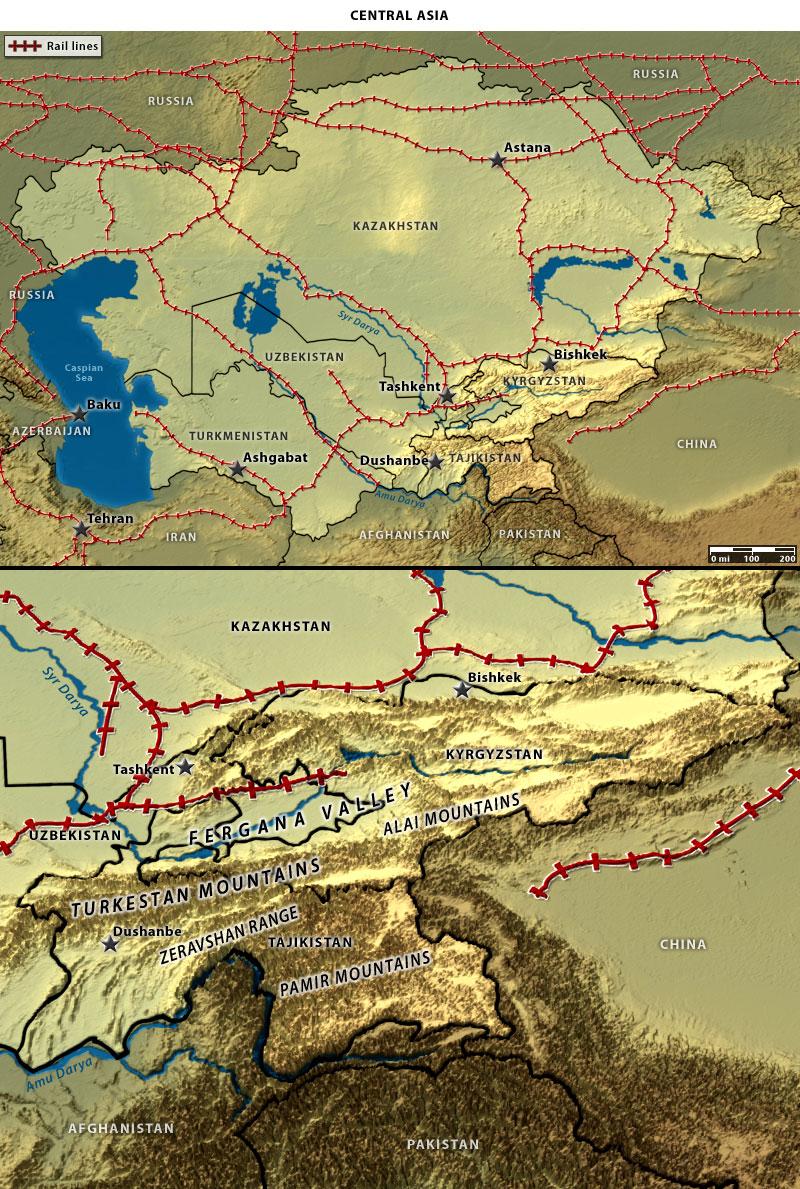
At present, Uzbekistan sees an opening for countering Russian threats given the United States’ wooing of Tashkent. Both the Americans and the Russians understand that Uzbekistan is the winning Great Game chip the United States needs to strengthen its presence in Central Asia — something that explains the attention U.S. Central Command chief Gen. David Petraeus has devoted to Uzbekistan, as well as the Kremlin’s quick counters to each American move.
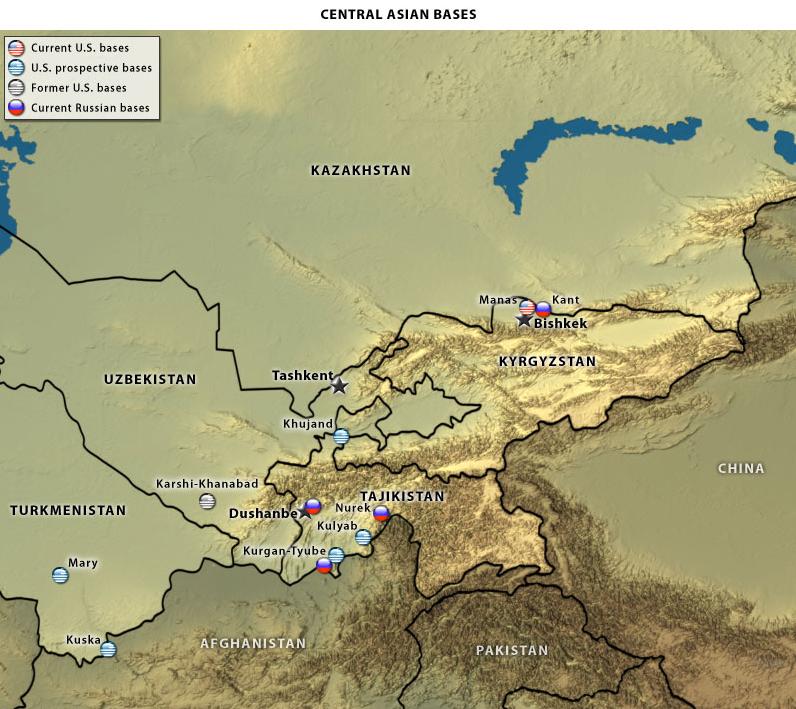
Second, Russia still holds a controlling influence over all of Uzbekistan’s Central Asian neighbors, and Moscow has not hesitated to threaten Uzbekistan with strengthening those neighbors. Russia has allowed Turkmenistan and Kazakhstan to bully Uzbekistan over price negotiations for natural gas flowing north. And Moscow, which controls the drug and arms flow over the Tajik border into Uzbekistan, has flooded Tajikistan (and its drug lords) with cash and arms. Tajikistan may be a small, fractured and nearly bankrupt country, but Uzbekistan and Tajikistan have had a cultural rivalry for more than a century.
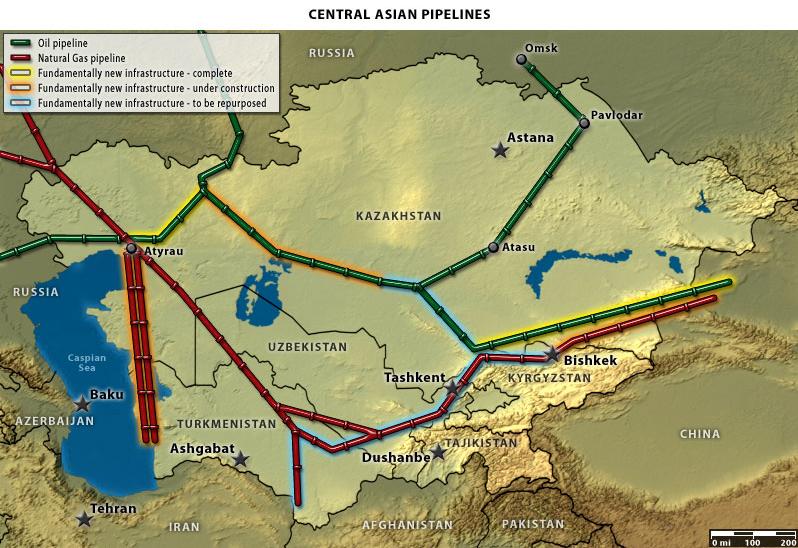
Both the Americans and the Russians understand that Uzbekistan is the winning Great Game chip the United States needs to strengthen its presence in Central Asia — something that explains the attention U.S. Central Command chief Gen. David Petraeus has devoted to Uzbekistan, as well as the Kremlin’s quick counters to each American move.
Uzbekistan lacks a history with the Americans, so it is distrustful of what siding with Washington might bring. It also has been broken by the Russians before, and so will need to learn carefully how far it can tread within the balancing game — a game much bigger than just Central Asian affairs.
What Russia wants in all of this is a disarmament in regards to American plans for placing ballistic missile defense installations in Europe, and the position of the United States — and the rest of NATO — on what remains of Russia’s periphery, particularly Georgia and Ukraine.
Although American uncertainty about the future strategic environment remains deep, everyone on the American side also believes that enormous reductions in the U.S. nuclear arsenal are in order. The immense stockpiles on both sides are exceedingly expensive to maintain and keep deployed; both the White House and the Kremlin would like to lower the costs to a more reasonable level through extensive reductions. Further reductions have always been a possibility, but while Obama would sacrifice some long-term freedom of action if he gives the Russians some of the rigor in the treaty that they desire, in exchange he could potentially cement a long-term working relationship with the Kremlin.
